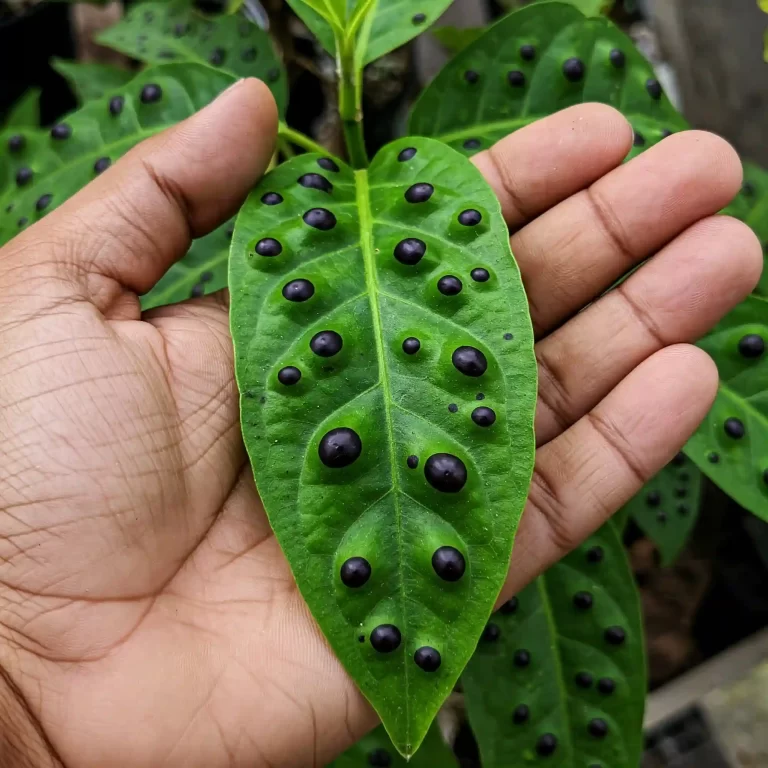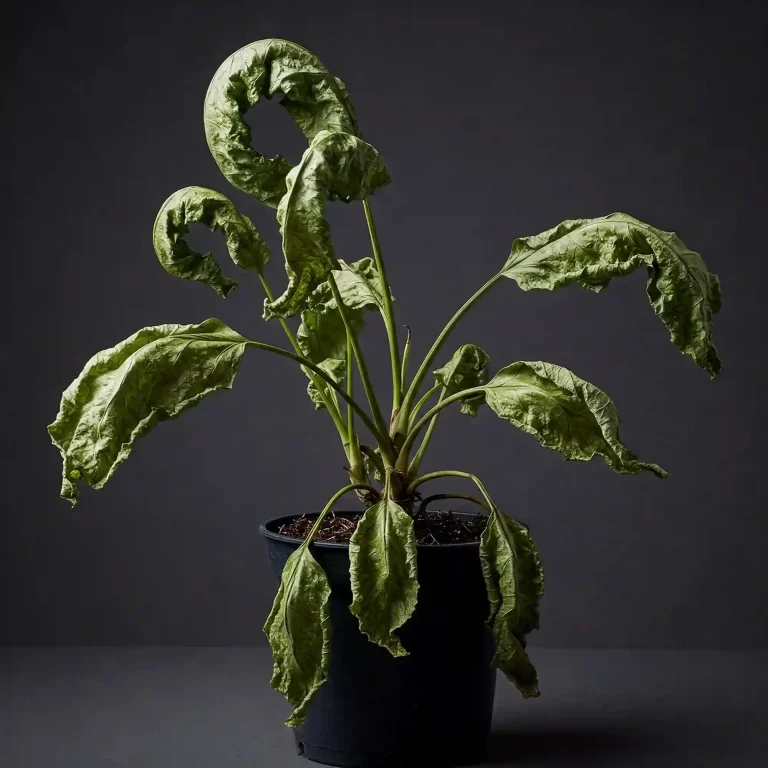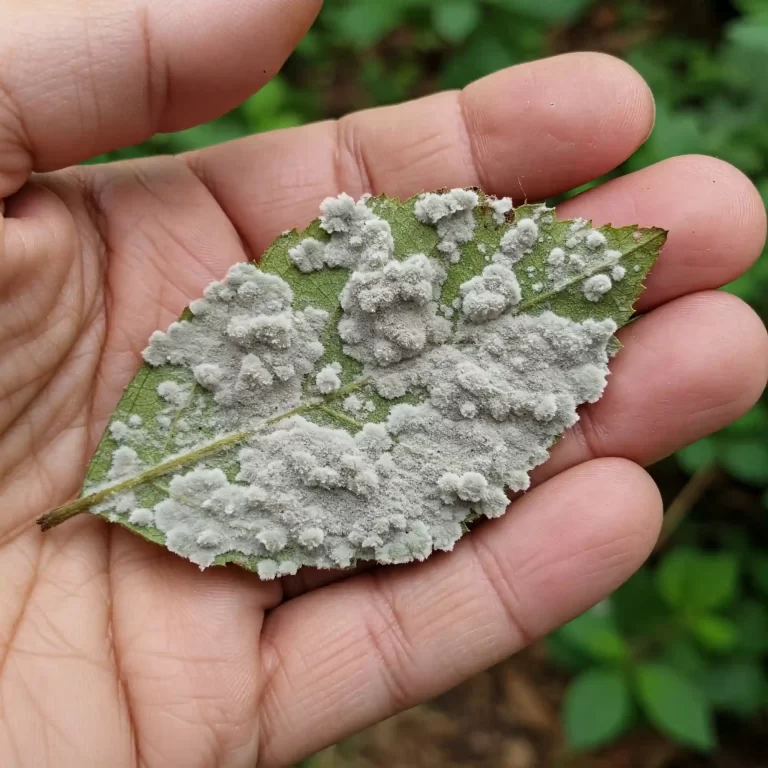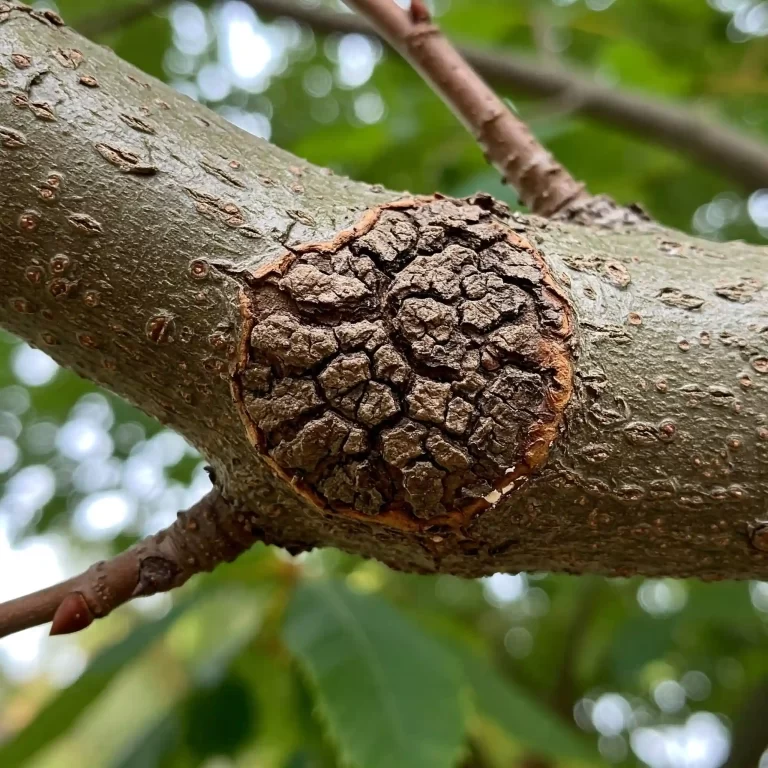| – Hurricane fern is a type of bird’s nest fern with twisted and spiral-shaped leaves. |
| – It is a rare and new plant that was created in 2014 in the Netherlands by Vitro Plus BV. |
| – It is a non toxic and air purifying plant that can add some flair and drama to your indoor garden. |
| – It requires bright, indirect light, well-draining soil, warm and humid conditions, and monthly fertilization. |
| – It can be pruned, repotted, and propagated by dividing the rhizome or the root ball. |
| – It can be affected by pests and diseases such as mealybugs, scale insects, spider mites, and fungal infections. |
Have you ever seen a fern that looks like it was caught in a tornado? What if I told you there is a fern that has leaves that twist and spiral like a hurricane? Meet the hurricane fern, a type of bird’s nest fern with twisted and spiral-shaped leaves that will blow your mind.
In this article, you will learn everything you need to know about growing and caring for a hurricane fern, the twisted bird’s nest fern that will add some flair and drama to your indoor garden.
What is a Hurricane Fern?
Hurricane fern is a common name for Asplenium antiquum ‘VITASPHUR’, a patented plant created in 2014 in the Netherlands by Vitro Plus BV. It is a cultivar of Asplenium antiquum, a species of evergreen fern native to East Asia that is endangered in the wild.
Hurricane fern is also known as twisted bird’s nest fern or asplenium hurricane, because of its unique leaf shape that resembles a hurricane or a tornado. The leaves are dark green, glossy, and leathery, and can grow up to 20 inches long and 4 inches wide. The leaves emerge from a central rosette that forms a nest-like structure, hence the name bird’s nest fern.
Hurricane fern is a non toxic and air purifying plant that can remove harmful chemicals such as formaldehyde, xylene, and toluene from the air. It is also a low-maintenance plant that can adapt to various indoor conditions, making it a great choice for beginners and experts alike.
Hurricane fern is a rare and new plant that can be hard to find in local nurseries, but you can order it online from some reputable sellers such as Lowes or Amazon. You can also check out some online reviews and tips from other hurricane fern owners, such as Morgan or Brittany Goldwyn.
Basic Requirements for Hurricane Fern Care
Like any other plant, hurricane fern has some basic requirements that you need to provide for it to grow and thrive. These are:
- Light
- Water
- Temperature
- Soil
Let’s take a look at each of these factors in more detail.
Light
Hurricane fern needs bright, indirect sunlight for optimal growth and health. Avoid direct sun exposure as it can burn the leaves and cause them to lose their color and shape. Place your plant near a window that receives filtered or diffused light, or use a sheer curtain to protect it from harsh rays. You can also use artificial lights such as fluorescent or LED bulbs to supplement the natural light, especially during the winter months.
If your plant does not receive enough light, it may become leggy, weak, and pale. If your plant receives too much light, it may develop brown, crispy, or curled edges on the leaves. You can tell if your plant is getting the right amount of light by observing its leaf shape and color. A healthy hurricane fern should have dark green, glossy, and twisted leaves that form a spiral pattern.
Water
Hurricane fern likes to be watered regularly, but not too much. Water your plant when the top inch of soil feels dry to the touch, but do not let it dry out completely. Do not let water pool in the center of the plant as it can cause rot and fungal infections. Use a well-draining soil mixture designed for houseplants, and a pot with drainage holes. Water your plant thoroughly until the excess water drains out of the bottom of the pot. Empty the saucer or tray after watering to prevent soggy soil and root rot.
If your plant does not receive enough water, it may wilt, droop, and lose its shape. If your plant receives too much water, it may develop yellow, brown, or black spots on the leaves, or mushy and rotten roots. You can tell if your plant is getting the right amount of water by checking the soil moisture and the leaf condition. A happy hurricane fern should have moist, but not wet, soil, and firm, but not stiff, leaves.
Temperature
Hurricane fern prefers a warm and humid environment, similar to its native habitat in East Asia. The ideal temperature range for this plant is between 60-80°F. Avoid exposing your plant to cold drafts or extreme heat, as it can cause stress and damage to the plant. You can use a thermometer to monitor the temperature around your plant, and adjust it accordingly.
If your plant is too cold, it may develop brown, black, or gray spots on the leaves, or lose its color and shape. If your plant is too hot, it may wilt, dry out, or scorch. You can tell if your plant is comfortable by feeling its leaves. A cozy hurricane fern should have warm, but not hot, leaves.
Soil
Hurricane fern needs a well-draining soil mixture that is rich in organic matter and has a slightly acidic pH. You can use a commercial potting mix designed for houseplants, or make your own by mixing equal parts of peat moss, perlite, and compost. You can also add some charcoal or bark chips to improve drainage and aeration. You can use a pH tester to check the acidity of your soil, and adjust it if needed.
If your soil is too dense, compacted, or waterlogged, it may suffocate the roots and cause rot. If your soil is too loose, sandy, or alkaline, it may dry out the roots and cause nutrient deficiency. You can tell if your soil is suitable by squeezing a handful of it. A good soil for hurricane fern should hold its shape when squeezed, but crumble when touched.
Tips for Hurricane Fern Care
Besides the basic requirements, there are some additional tips and tricks that you can follow to make your hurricane fern thrive and look its best. These are:
- Fertilizer
- Pruning
- Repotting
- Propagation
Let’s explore each of these tips in more detail.
Fertilizer
Hurricane fern does not need a lot of fertilizer, but it can benefit from some occasional feeding during the growing season. Fertilize your plant once a month from spring to fall with a balanced liquid fertilizer diluted to half strength. Do not overfeed your plant as it can cause leaf tip burn and salt buildup in the soil. Stop fertilizing your plant during the winter when it is dormant.
If your plant is underfed, it may grow slowly, weakly, and pale. If your plant is overfed, it may develop brown, crispy, or curled edges on the leaves, or stunted growth. You can tell if your plant is getting the right amount of fertilizer by observing its growth rate and leaf condition. A well-fed hurricane fern should have steady, healthy, and vibrant growth.
Pruning
Hurricane fern does not need a lot of pruning, but it can benefit from some occasional trimming to remove any dead, damaged, or diseased leaves. Use a sharp and sterile pair of scissors or a knife to cut the leaves at the base of the stem. This will help your plant maintain its shape and prevent the spread of infections. You can also prune your plant to control its size and appearance, if desired.
If your plant is not pruned, it may become overcrowded, messy, or infected. If your plant is overpruned, it may lose its character, charm, or vitality. You can tell if your plant needs pruning by inspecting its leaves and stems. A well-pruned hurricane fern should have clean, healthy, and twisted leaves that form a spiral pattern.
Repotting
Hurricane fern does not need to be repotted very often, but it can benefit from some occasional repotting to refresh the soil and provide more room for the roots. Repot your plant every two to three years or when it outgrows its current pot. Choose a pot that is one size larger than the previous one and has drainage holes. Use fresh soil and gently loosen the roots before placing your plant in the new pot. Water your plant well after repotting and keep it in a shaded area for a few days to help it adjust.
If your plant is not repotted, it may become rootbound, stunted, or stressed. If your plant is repotted too frequently, it may become shocked, damaged, or stressed. You can tell if your plant needs repotting by checking the roots and the pot. A plant that needs repotting should have roots that are growing out of the drainage holes, or a pot that is cracked, broken, or too small.
Propagation
Hurricane fern can be propagated by dividing the rhizome or the root ball. This is a simple and easy way to create more plants from one parent plant. Propagate your plant in the spring or summer when it is actively growing. Use a sharp and sterile knife to cut the rhizome or the root ball into several sections, making sure each section has at least one healthy leaf and some roots. Plant each section in a separate pot with fresh soil and water them well. Keep them in a warm and humid place until they establish new growth.
If you propagate your plant correctly, you should have several new plants that are identical to the parent plant. If you propagate your plant incorrectly, you may damage or kill the plant, or end up with weak or deformed plants. You can tell if your plant is propagating successfully by observing its roots and leaves. A successful propagation should have healthy, white, and growing roots, and new, green, and twisted leaves.
Common Problems of Hurricane Fern Care
Hurricane fern is a resilient and hardy plant, but it can still be affected by some common pests and diseases that can harm its growth and health. These are:
- Mealybugs
- Scale insects
- Spider mites
- Fungal infections
Let’s learn more about each of these problems and how to prevent and treat them.
Mealybugs
Mealybugs are small, white, cottony masses that can be found on the leaves and stems of your hurricane fern. They are sap-sucking insects that can weaken your plant and cause yellowing, wilting, and stunted growth. They can also spread viruses and bacteria to your plant, and secrete a sticky substance called honeydew that attracts ants and fungal growth.
To prevent mealybugs, keep your plant clean and healthy, and inspect it regularly for any signs of infestation. To treat mealybugs, wipe them off with a cotton swab dipped in rubbing alcohol, or spray them with a solution of water and insecticidal soap or neem oil. Repeat the treatment every few days until the pests are gone.
Scale insects
Scale insects are tiny, brown, oval-shaped bumps that can be found on the leaves and stems of your hurricane fern. They are also sap-sucking insects that can weaken your plant and cause yellowing, wilting, and stunted growth. They also secrete honeydew that attracts ants and fungal growth.
To prevent scale insects, keep your plant clean and healthy, and inspect it regularly for any signs of infestation. To treat scale insects, scrape them off with a toothbrush or a knife, or spray them with a solution of water and insecticidal soap or neem oil. Repeat the treatment every few days until the pests are gone.
Spider mites
Spider mites are tiny, red, spider-like creatures that can spin fine webs on the leaves and stems of your hurricane fern. They are not insects, but arachnids that feed on the chlorophyll of your plant and cause speckled, discolored, and dry leaves. They can also transmit viruses and bacteria to your plant, and multiply rapidly in dry and dusty conditions.
To prevent spider mites, keep your plant clean and healthy, and provide adequate humidity and ventilation. To treat spider mites, wash them off with a strong jet of water, or spray them with a solution of water and insecticidal soap or neem oil. Repeat the treatment every few days until the pests are gone.
Fungal infections
Fungal infections are black, brown, or gray spots or patches that can be found on the leaves and stems of your hurricane fern. They are caused by excess moisture, poor ventilation, or contaminated soil. They can spread quickly and kill your plant if left untreated.
To prevent fungal infections, keep your plant clean and healthy, and avoid overwatering and overcrowding. To treat fungal infections, remove any infected leaves and stems, and apply a fungicide or a solution of water and baking soda or hydrogen peroxide. Repeat the treatment every few days until the infection is gone.
Conclusion
Growing and caring for a hurricane fern is not as hard as it seems, as long as you follow these simple steps and guidelines. By providing the right light, water, temperature, and soil, and following some additional tips on fertilizing, pruning, repotting, and propagating, you can make your hurricane fern thrive and look its best. You can also prevent and treat some common problems such as mealybugs, scale insects, spider mites, and fungal infections, and keep your plant healthy and happy.
If you are looking for a unique and eye-catching plant to add to your indoor garden, why not give the hurricane fern a try? You will be amazed by its twisted and spiral-shaped leaves that will add some flair and drama to your space.
Thank you for reading this article, and happy gardening! We hope you enjoyed this article, and learned something new about the hurricane fern, the twisted bird’s nest fern that will blow your mind.



